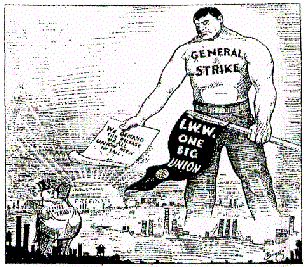I have a small laundry list of failings
of the fantasy genre that drive me absolutely bonkers. Sitting right
near the top of that list—right after the big-tickets like
cardboard, Tolkein-rip-off—is that way too-common one of characters
whose world view drip with the mundane and modern. Motivations and
dialogue that are so jarringly familiar and pedestrian—minus great compensation in
other areas—that they invariably yank me right out of that feeling
of being somewhere else entirely (one of the great points of fantasy)
What I find it so deeply disappointing
about that drek is that fair-to-good novels in another genre
routinely succeed in shifting that feeling of being in a different
world despite it's painstakingly real-world orientation: historical
fiction.
It has passed into cliché, but it's
worth repeating the old L.P. Hartley quote: “The past is a
foreign country: they do things differently there.” And that's
what I love, the same ability--like the best fantasy--to walk around
in the shoes of characters that have values, perspectives and
motivations mostly different from my own.
Skipping to the chase, here's a list of
historical fiction that spans the pre-industrial era that I found
particularly inspiring for me as a GM:
Knight in Anarchy by George
Shipway
Brutal and vivid this short novel
centers on the life of Humphrey Visdelou, a Anglo-Norman small
fiefholder in the Anarchy (the 12th-century period of
civil war that serves as the backdrop for Jeff Rients's famous Wessex
campaign).
It hovers close to the ground (though Humphrey becomes
involved with many of the big-ticket events of the day) and is
painstakingly researched with a character and period detail that
surpasses the “alien test” for me.
Sadly out-of-print and
difficult/expensive to find in the U.S. outside of libraries. (I
lucked out and fished one of out the dollar bin of a used bookstore).
The Warlord and Saxon Chronicles, Azincourt by Bernard Cornwell
The novels of the insanely-prolific Cornwell, best known for his Napoleonic-era Sharpe books, are somewhat predictable in their choice of protagonist--invariably a rough, but honorable military man who bucks authority and religion (almost to the point of being an “Eternal Champion” of sorts). Nevertheless he writes some great adventure novels.
Worth checking out in particular are the Warlord books set in historical Arthurian Britain (with some agnostic, believable whiffs of druidic magic), the Saxon chronicles of 9th century England and the stand-alone, recent Agincourt novel.
The King Must Die and The
Bull From the Sea by Mary Renault

Renault's attempt to reconcile a more
historical Theseus with the assumptions of the Golden Bough. The
first book goes through his sojourn in the Labyrinth palace of Minoan
Crete, the second with the argonauts attempts to capture the “golden
fleece.”
It's also worth picking up her other novels oriented
around the Hellenic world.
Q by Luther Blisset
Opening up with a bang in the heat and
turmoil of the Peasant Wars and Reformation in the Holy Roman Empire,
this sprawling “thinking persons' thriller” follows an
obsessional Inquistor and his quarry, a radical Anabaptist, through
several decades and cities in western 16th-century Europe. Interestingly Luther Blisset is a
coded pseudonym for a (talented) collective of anonymous Italian writers.
Gentleman of the Road by
Michael Chabon
Pultizer-winner
Chabon's excellent 10th century-adventurer tale of two
Jewish swordsmen/scalawags traveling to the distant Central Asian
land of the Khazars. Explicitly dedicated to Leiber's Lankhmar duo.
Shadows of the Pomegranate Tree
by Tariq Ali
Ultimately
depressing but captivating, this novel tells the story of an
Andalusian Muslim noble family immediately after the fall of Granada.
Good balance to the heavy Christian-center of most medieval historical fiction.
His novel
about Saladin is also good if a bit drier.
The Walking Drum by Louis L'Amour
Yep you read that right Louis “the hoary old western novelist” L'Amour. He just so happened to also write a good, if not great early medieval adventure tale that takes a slave and pirate from the coast of the Frankish empire to the splendors of Caliphate Cordoba and points east.
Name of the Rose and Baudlino
by Umberto Eco
You've
likely heard of the first (or seen the movie with Sean Connery), Eco
does a stand up job of bringing to life the details of real life and
the social/intellectual trends of medieval Europe.
Baudlino is
nowhere as accessible and gripping as Name of the Rose, but worth
picking up if you have an interest in Constantinople around the time
of its capture in the Fourth Crusade.
Also worth checking
out:
The Lymond Chronicles and The House of
Niccolo series by Dorothy Dunnett
With Fire and Sword, The Deluge,
and Fire in the
Steppe by Henryk Sienkiewicz
I, Claudius, Claudius the God, and
Count Belisarius by Robert Graves
Gates of Fire by Steven
Pressfield
Whale Road by Robert Low
So how about you? Any lovely old
favorite historical novels of interest to us fellow fantasy gamer














